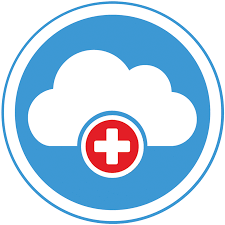Cloud computing will replace traditional data centers within 3 years
The use of cloud computing services and applications continues to increase at a rapid rate, leading to the rise of vast ‘hyperscale’ cloud data centers.
Both consumer and business applications are contributing to the growing dominance of cloud services. For consumers, streaming video, social networking, and search are among the most popular cloud applications; for business users, enterprise resource planning (ERP), collaboration, and analytics are the top growth areas, according to research from Cisco.
And, driven by the rapid increase in use of cloud apps, data center traffic is growing fast, expected to reach 19.5 zettabytes (ZB) per year by 2021, up from a mere 6.0ZB per year in 2016, according to Cisco. Cloud data center traffic will represent 95 percent of total data center traffic by 2021, compared to 88 percent in 2016.
The growth of Internet of Things (IoT) applications, such as smart cars, smart cities, and connected health devices, will also expand data center demands. By 2021, Cisco expects IoT connections to reach 13.7 billion, up from 5.8 billion in 2016, according to its Global Cloud Index.
All of this has led to the rise of what the networking giant is calling ‘hyperscale data centers’ — large-scale public cloud data centers. It said there will be 628 hyperscale data centers globally by 2021, compared to 338 in 2016.
By then, these data centers will hold 53 percent of all data center servers (up from 27 percent in 2016), account for 69 percent of all data center processing power (compared to 41 percent in 2016), 65 percent of all data stored in data centers (51 percent in 2016) and 55 percent of all data center traffic (up from 39 percent in 2016).
To be a hyperscale cloud operator under the definition used by Cisco, a company must have more than $1bn in Infrastructure-as-a-Service or Platform-as-a-Service (for example, Amazon/AWS, Rackspace, NTT, or IBM), or $2bn in Software-as-a-Service (for example, Salesforce, Google, Microsoft, or Oracle), $4bn in internet/search/social networking (for example, Facebook, Apple, Tencent, or Yahoo), or $8bn in e-commerce/payment processing (for example, Amazon, eBay, or Alibaba).
Cisco said that by 2021, 94 percent of workloads and compute instances will be processed by cloud data centers — only six percent will be processed by traditional data centers. For Cisco, cloud data centers are those with higher levels of virtualization, standardization, automation, and security than traditional data centers. “Cloud data centers offer increased performance, higher capacity, and greater ease of management compared with traditional data centers. Virtualization serves as a catalyst for hardware and software consolidation, greater automation, and an integrated security approach,” it said.
Cisco said that by 2021, 94 percent of workloads and compute instances will be processed by cloud data centers — only six percent will be processed by traditional data centers. For Cisco, cloud data centers are those with higher levels of virtualization, standardization, automation, and security than traditional data centers. “Cloud data centers offer increased performance, higher capacity, and greater ease of management compared with traditional data centers. Virtualization serves as a catalyst for hardware and software consolidation, greater automation, and an integrated security approach,” it said.
Category: Uncategorized

